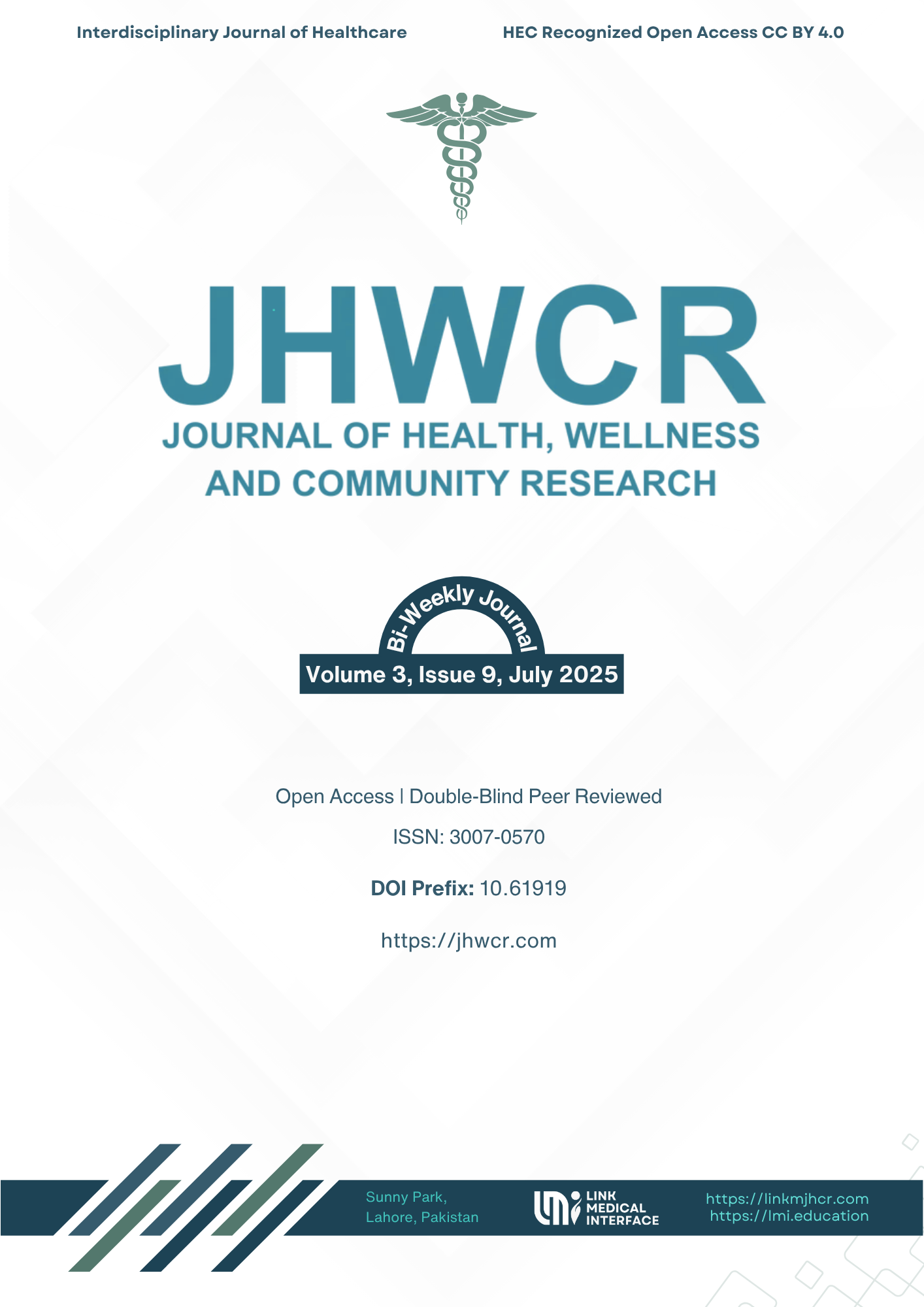Prevalence of Rotator Cuff Tears in Adult Gym Trainers
DOI:
https://doi.org/10.61919/51v5pj47Keywords:
Rotator cuff tear, shoulder pain, gym trainers, occupational injury, WORC, musculoskeletal disordersAbstract
Background: Gym trainers are occupationally exposed to high-frequency, high-intensity shoulder movements, predisposing them to rotator cuff injuries. Despite the physical demands of their role, there is limited epidemiological data specifically quantifying the burden of rotator cuff pathology in this professional group. Objective: To determine the prevalence and severity of rotator cuff tears and associated shoulder pain among adult gym trainers in Lahore, and to examine their relationship with occupational exposure. Methods: A cross-sectional observational study was conducted among 164 certified gym trainers aged 22–40 years using non-probability convenience sampling. Data were collected using the Western Ontario Rotator Cuff Index (WORC) and analysed with SPSS version 27. Descriptive statistics summarized demographic variables, and chi-square tests and odds ratios assessed associations between rotator cuff severity, pain intensity, gender, and years of experience. A p-value <0.05 was considered statistically significant. Results: Among participants, 80.5% had rotator cuff tears and 75.6% reported shoulder pain. Tear severity correlated significantly with pain intensity (χ²=24.32, p<0.001), with severe tears associated with 19.2-fold higher odds of severe pain. WORC scores increased with years of experience, suggesting cumulative exposure as a contributing factor. No significant differences were observed by gender or age group. Conclusion: Rotator cuff pathology and shoulder pain are highly prevalent among gym trainers, with strong evidence of a dose-response relationship to occupational exposure. Targeted preventive strategies are urgently needed to mitigate long-term musculoskeletal disability in this workforce.
Downloads
Published
Issue
Section
License
Copyright (c) 2025 Rameesha Khan, Arooj Fahim, Areeba Saleem Butt, Anas Sohail, Komal Qayyum (Author)

This work is licensed under a Creative Commons Attribution 4.0 International License.


